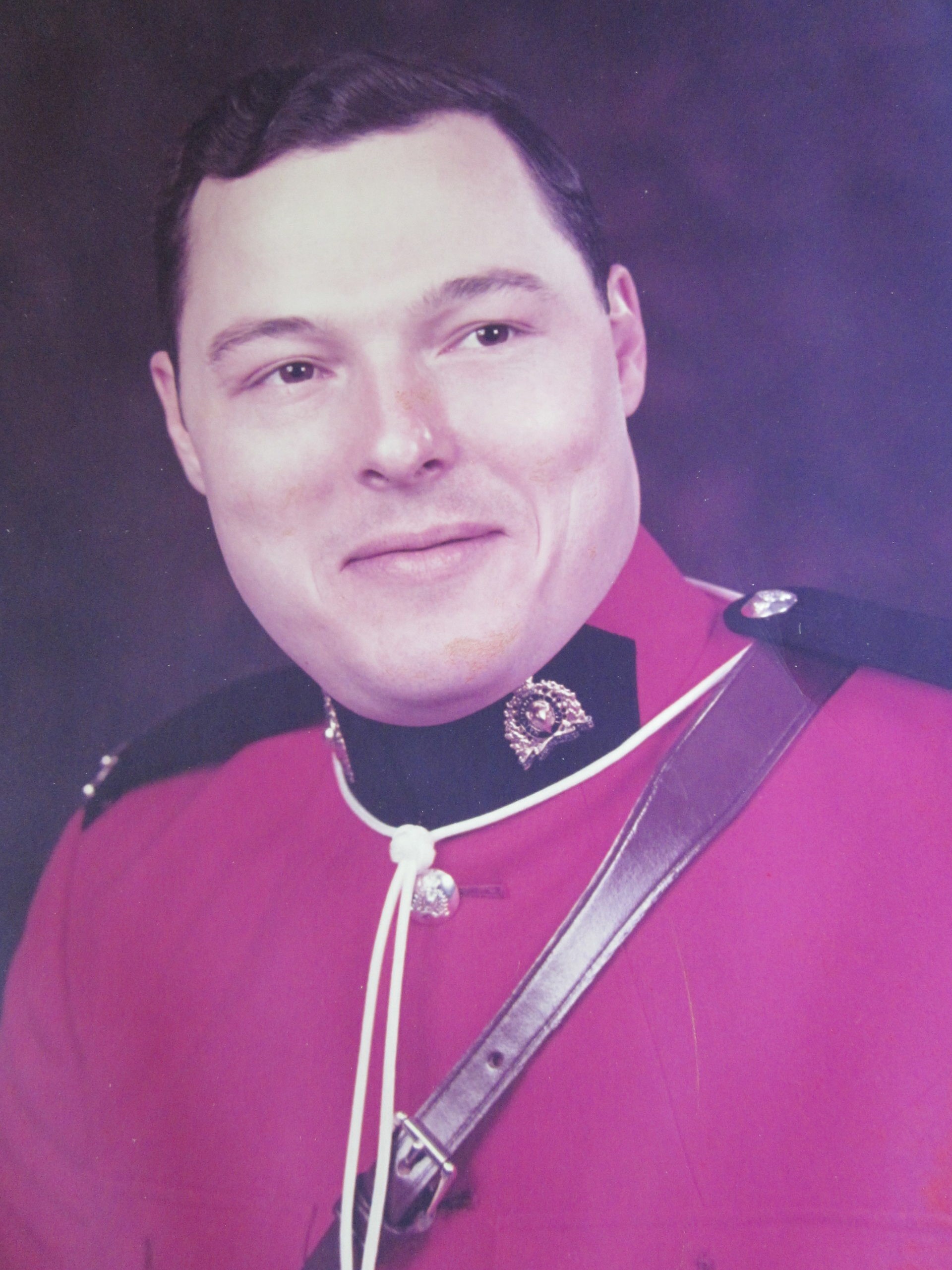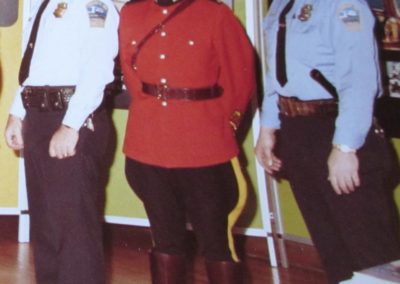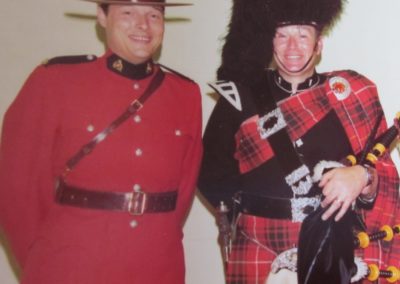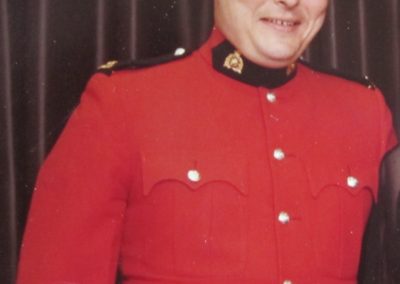Ronald James Giblin

Home Town: Montreal, Quebec
Training Division: “O”
Troop: TR. 4 1976/77
Regimental Number: 33452
Divisions Served: “O,” “C,” “L”
Pillar Location: Pillar XI, Row 5, Column C
Story:
My story starts in 1974 when I was working in the bonds and stocks department of the Bank of Montreal at CIL House in Montreal. A customer wanted to cash $100,000 in U.S. bearer bonds that he won in a poker game. I told him that it would take a few days to complete the transaction.
Following the bank’s policy, I called the RCMP detachment in Montreal to ensure the bearer bonds were not stolen. I spoke to corporal Lemay of the commercial crime section who confirmed the bonds were not stolen.
During our conversation, I told the corporal I always wanted to join the RCMP, but I knew there were restrictions on hiring men who were married, like me. He told me the RCMP had changed its policy and was now accepting married men.
So it was that on August 3, 1976, I was accepted as a member of the RCMP. At 27 years of age, weighing more than 200 pounds and with seven years of working behind a desk, little did I know how difficult my life at Depot Division in Regina would be.
When I arrived, I became a member of the “fat boys” club. I also required extra swimming lessons, weight training and driver training because I was told that I drove like a Montrealer.
When I returned home to Montreal on Thanksgiving weekend after two months of training, I had already lost more than 35 pounds. Physical training at Depot was difficult. I know that without the support and encouragement of my fellow troopmates, I would not have completed the training.
During my first posting in Niagara Falls, I investigated the redevelopment plans of Maple Leaf Village and the smuggling of blueprints from the U.S. I was also involved in the investigation of a large illicit drug organization with investigators from Revenue Canada.
As part of the detachment in Niagara, I participated in the RCMP’s efforts to help Peel Regional Police during the Mississauga train derailment in 1979. I also provided security protection at the meeting of the G7 in Montebello, Quebec in 1981, the Queen Mother’s visit to Niagara-on-the-Lake in 1981, and the visit of Pope John Paul II to Midland, Ontario and Newfoundland in 1984.
In October 1984, I was transferred to the commercial crime/bankruptcy section in “O” Division headquarters in Toronto where I helped with security operations that were tied to the bombing of Air India flight 182.
The following year, I was transferred to St-Jerome, Quebec. When I arrived, the neighbours gave me and my family a warm welcome. They suggested that we could all improve our language skills if we spoke in French to them and they spoke in English to us.
My duties in St-Jerome included immigration investigations at Mirabel Airport as well as driving the RCMP boat across the lakes in the Laurentians. I also got to meet Prime Minister Pierre Trudeau while providing security protection at his cottage north of Montreal.
Four years later, I was transferred to Souris, Prince Edward Island where most of my neighbours were farmers and fishermen. As a Montrealer, my first impression of Souris was that it was very dark at night.
In addition to my police duties, my family and I became known in the community as the rescuers of stray dogs and cats. We had a cross-eyed cat named Silver as well as an orphaned lamb that we named Wally. Wally thought he was a dog and would come running up the driveway with our dogs to greet me in the police car. One of our friendly neighbours even put a diaper on Wally and cut a hole for his tail.
The community in Souris welcomed us with open arms and today we still maintain contact with all of the friends we made there.
As a result of my experience with the RCMP, I went on to become vice-president of investigation services at the Insurance Bureau of Canada in Toronto, and in 2001, I became CEO of CarProof, a company in London, Ontario that provides vehicle history reports.
To this day, I know that I would never have had the jobs I did after leaving the force without the top-notch training I received at the RCMP.
I also know that if I ever need assistance, many of my fellow RCMP members would be there to help me. In fact, I do not know of another organization where the friendships made have continued for more than 40 years despite the fact that many of the friends are scattered across the country.
Today, after 43 years since my first posting in Niagara Falls, I still look forward to visiting my detachment commander to talk about our days working for the RCMP.
This is my story of service.
Thank you to the RCMP Heritage Centre for giving me the opportunity to share my story and contribute to the legacy of the force.




